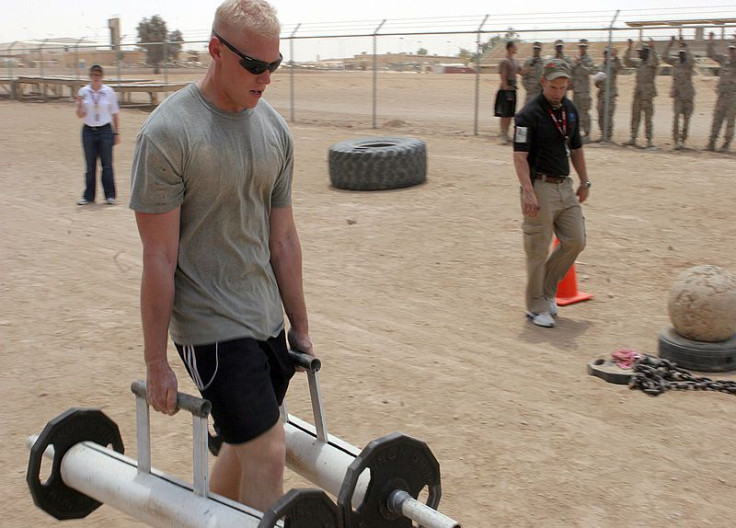Post-Workout Muscle Soreness: Expert Tips On How To Relieve Exercise Induced Muscle Aches

A vigorous workout at the gym can leave you feeling immediately revitalized and replenished to fatigued and in pain all in the same day. Delayed onset muscle soreness (DOMS) is the sensation felt in exercised muscles between eight hours and three days following a high-intensity exercise and training regimen, says Sportsmed.info. DOMS not only occurs in those who are less physically trained, it is experienced by most people and even professional athletes who engage in exercises that can potentially damage your muscle fibers.
According to John Hopkins Medicine, the mild pain that is short-lived and felt only during a workout is considered to be “good pain” while the soreness felt after a workout is considered to be “bad pain” because of the added stress on muscles that have not been exercised for long periods of time. Therefore, the best way to avoid severe or sharp pain or the inability to move a limb is to not participate is to choose exercises to which you are accustomed to said Charla McMillian, NSCA Certified Strength and Conditioning Specialist to Medical Daily. “While the appearance of DOMS is normal and expected after normal exercise and training, the appearance of truly extreme DOMS is an indication that you have undertaken activity you were not used to or incorrect or excessive movements and sustained injury,” she said.
The exact cause of muscle soreness post-workout has yet to be perfectly understood by the scientific community. There is speculation though that exercise induced muscle aches are most likely related to inflammation within the muscle that causes the pain sensation felt by those who do fitness.
How Inflammation Of The Muscle Occurs
The smooth muscle tissue is located in the walls of your blood vessels, the stomach, intestines, and the bladder, says Muscleandstrength.com. If you overstretch your muscle fibers repeatedly, this triggers the onset of microtears, small tears that can occur within in the muscle fibers. When the muscle fibers tear, the muscle releases several substances that provoke an inflammatory response in the body. The inflammatory response yields aching symptoms that are thought to be one of the contributing factors to muscle soreness.
Symptoms Of Muscle Soreness
DOMS may take anywhere from 24 hours to 48 hours to develop in your body post-workout. The painful symptoms typically last eight hours to 72 hours, depending on the severity of the muscle pain. The common symptoms of muscle soreness to look for are the following:
· Aching pain
· Muscle stiffness
· Tenderness of the muscle
Expert Tips To Relieve Exercise Induced Muscle Soreness
To help repair the muscle damage in your body and reduce healing time for your sore muscles, Charla McMillian, who has 26 years of experience coaching and training athletes shares her expert tips with Medical Daily on how to relieve post-workout muscle soreness even for the toughest of pains.
1. Be sure to warm up properly before engaging in exercise.
2. Cool down and stretch properly when finished exercising.
3. Consider taking your favorite NSAID (nonsteroidal anti-inflammatory drugs) anti-inflammatory (ibuprofen, naproxyn, and acetaminophen) before you begin exercising and after exercising.
4. Ice the affected area to slightly reduce the affected area’s temperature to relieve any inflammation or swelling. This icing can be done with an ice pack, a bag of frozen vegetables, or even a full water bottle. Ice the area for 20 minutes with the ice on for 20 minutes off for 20 minutes for appx.an hour to an hour and a half. After icing is complete, be sure to rewarm the area with some gentle massage and light movement.
5. Be sure to remember to stretch. This allows the exercised muscles to return to their length before you constricted them. You are not to try to force them to reach any particular distance.
6. If your movement is compromised, consider applying some compression. Use a neoprene wrap or support for the area. Remember that this approach will primarily serve to remind you specifically where the "injury" is so that you remember not to overuse the area when you resume exercising it.
7. Rest the affected area. Take a short break from performing the same movements, drills or exercises that induced the soreness. Start with 1-2 days and move to 1-2 weeks until pain subsides.
8. After the first day, if it feels better change from icing the area to applying heat. Again, remember that you do not need to cook the area, you are simply restoring normal blood flow. You can apply your heating pad or a commercial rub or cream.
For recovery foods that reduce post-workout muscle soreness, visit Active.com.



























